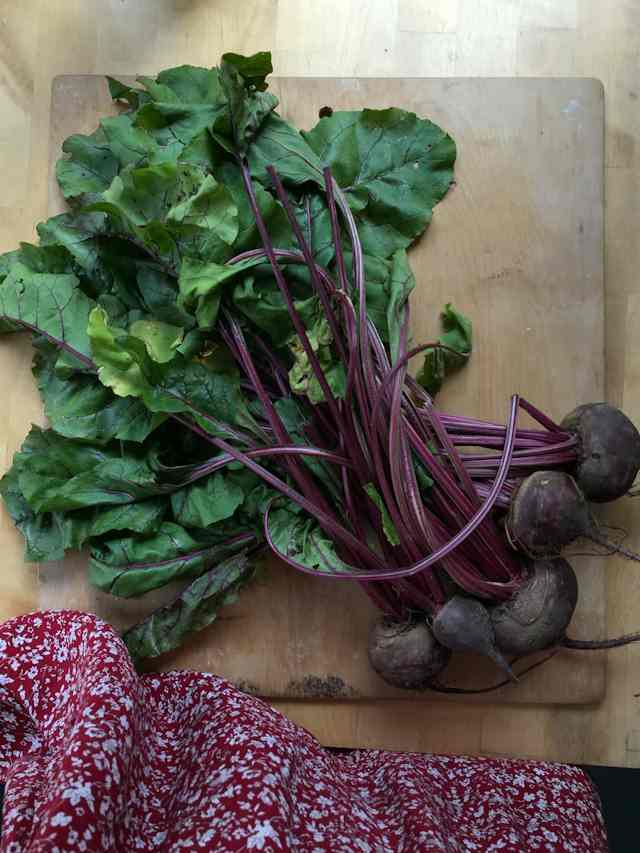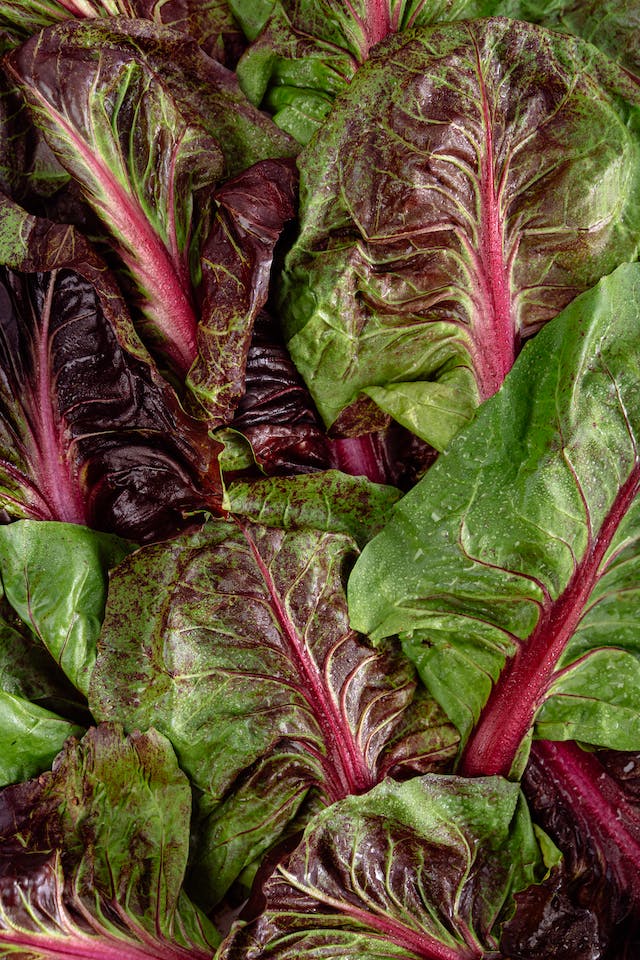If you are not scared of making a purple mess you may wonder if your guinea pigs are allowed to eat beets and parts of it.
Guinea pigs can have raw beetroot, beet greens and tops in moderation – 1-2 times per week max. No cooked vegetables, including cooked or pickled beets, are good for guinea pigs’ digestion.
Beetroot and beet leaves are not recommended for older pigs and guinea pigs prone to urinary problems.
Table of Contents
Beetroot Nutritional Value
Beets mainly consist of water (87%), carbs (8%), and fiber (2–3%).
| Nutrients | Amount in 100 gr |
|---|---|
| Calories | 43 kcal |
| Water | 87.6 g |
| Carbohydrates | 9.56 g |
| Fiber | 2.8 g |
| Protein | 1.61 g |
| Fat | 0.17 g |
| Sugar | 6.76 g |
| Sodium | 78 mg |
| Calcium | 16 mg |
| Iron | 0.8 mg |
| Copper | 0.075 mg |
| Phosphorus | 40 mg |
| Vitamin A | 2.00 mcg |
| Vitamin C | 4.9 mg |
| Folate | 109 mcg |
| Magnesium | 23 mg |
| Potassium | 325 mg |
| Selenium | 0.7 µg |
| Oxalates | 95-175 mg |
Is beetroot good for guinea pigs?
Beetroot can be included in a guinea pig’s diet in very small quantities.
The good thing about beetroot is that it a nutritious vegetable that contains various essential nutrients, including antioxidants, betalains, iron, and dietary fiber.
In raw beetroots, you can find:
- Antioxidants: Beetroot is rich in antioxidants, especially vitamin C, which helps boost the immune system and protect cells from oxidative stress.
- Betalains: Betalains are pigments found in beetroots that have anti-inflammatory, anti-cancer and detoxification properties, contributing to overall health.
- Iron: Iron is vital for the formation of hemoglobin in the blood. Beetroots contain a moderate amount of iron, although guinea pigs need minimal iron in their diet. Iron will prevent anemia and keep cardiovascular system healthy.
- Dietary Fiber: Beetroots are a good source of dietary fiber, which aids in digestionand regular pooping with no issues and supports a healthy gastrointestinal system. Fiber is essential for guinea pigs to maintain optimal gut health.
- Beets are good for pregnant piggies to support healthy development of the baby cavy.
Read also: Can Guinea Pigs Eat Parsnips? Safe serving, Risks & Benefits
Side effects
While beetroot is nutritious, it should be offered in moderation due to its high sugar content and a few related health issues.
Guinea pigs are prone to obesity and diabetes, so too much sugar can be harmful to their health.
Apart from that, beetroot and its parts can lead to:
- bloating and diarrhea
- overweight which can also results in high cholesterol levels, bumblefoot and breathing difficulties
- sugar is not only leading to bloating and diarrhea, but to the growth of bad bacteria
- allergic reaction
- choking hazard
- bladder or kidney stones due to high in oxalates, sodium and calcium that can build up especially in older cavies. Excessive feeding of beetroot can also throw off calcium/phosporus balance that leads to stones.
- if they are fed regularly, it causes a build up of toxins which can be fatal to guinea pigs.
The least worrisome side effects for pet parents are that beets can be messy – paws and mouth and fur can be purple, as well as poop.
Can pigs eat beet leaves and tops?
You can give one beetroot leaf (or 1/2 of a leaf) or 1-2 stalks to your guinea pig rarely (once a month), but kale would be better green option for piggies’ health.
Note that adult pigs and cavies prone to urinary issues should not eat too many beetroot.
Guinea pigs should always have a variety of leafy greens and veggies (optimal 5 different).
I would say it is best not to feed both beet root and leaves at the same serving. And if you want to try feeding it, introduce small slices or half of the leaf first.
FAQ
Do guinea pigs eat raw beetroot?
Guinea pigs like different raw vegetables including beets and beetroot leaves. They also cannot eat anything cooked so raw beetroot in moderation (1-2 times a week) is good for diversifying piggy’s diet.
Can you feed guinea pigs beet pulp?
Guinea pigs don’t eat well dried vegetables or pulp, but you can always try to introduce a small portion (around 20 gr) to see the reaction.


